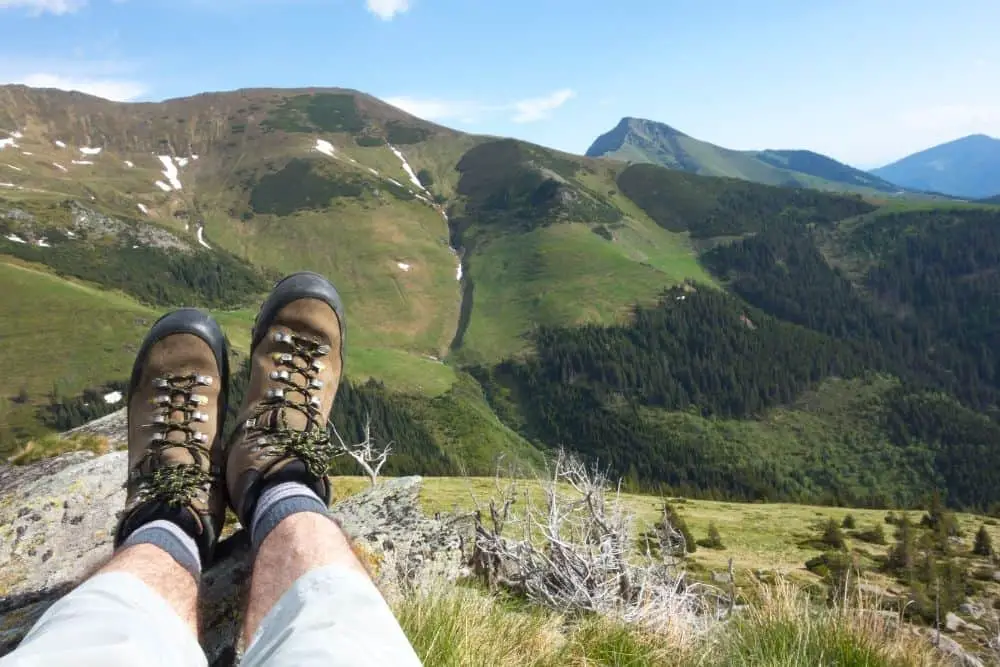On a hiking trip, one of the most important things is your boots. The size of your boots determines a lot when hiking because your feet need enough protection and support.
For instance, the wrong footwear could make hiking tedious or annoying for you. Unknowingly, some people, while trying to avoid buying tight hiking boots, end up buying “too big” ones.
You may be thinking that buying a pair of hiking boots that are two sizes bigger than your size would be okay. However, that isn’t always the case.
While tight hiking boots can be a problem, too big ones can be more problematic – which could make things go wrong. Most times, you may not know that you’ve gotten a pair of hiking boots that are too big until you wear them hiking.
That’s because you probably didn’t try them on when you bought them. So, how to tell if your hiking boots are too big? We’ll show you different signals that point that out.
Also, we will enlighten you on what could happen if you wear hiking boots that are too big. Let’s find out how to tell if hiking boots are too big.
What If My Hiking Boots Are Too Big?
Sometimes, when you can’t get footwear that is your size, you tend to go for a bigger size than a smaller one. And there’s no news that smaller shoe sizes can be extremely painful.
Getting a size slightly bigger than your usual isn’t the problem here. Of course, you need a lot of room to fit your feet perfectly and still have enough toe room to wiggle in your boots.
However, it becomes a problem when there is too much space for your feet. For example, wearing too big hiking boots can result in:
1. You may fall
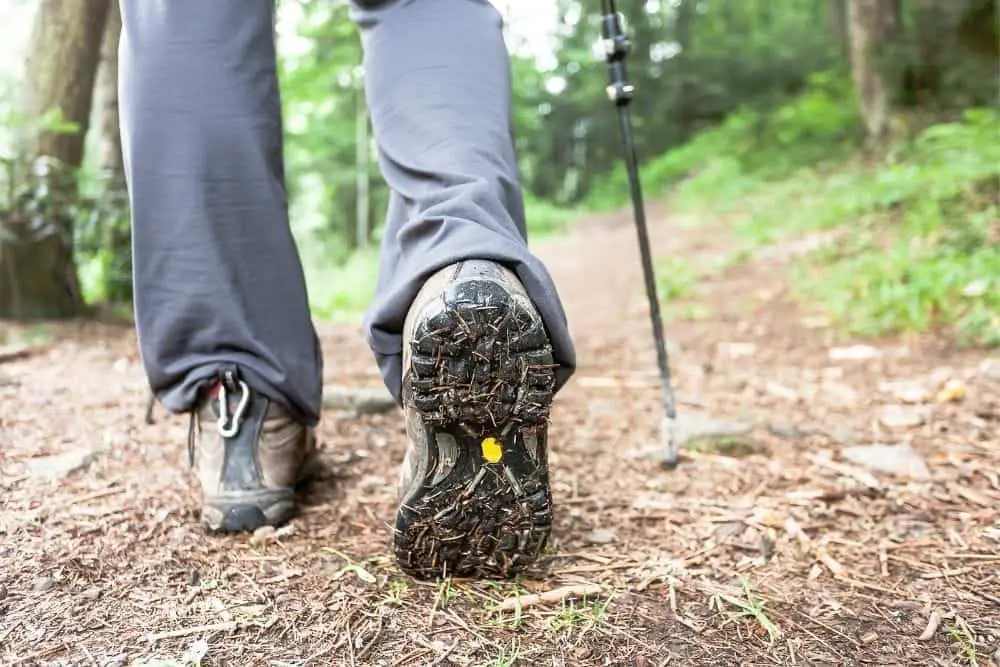
You could fall from wearing oversized hiking boots. When hiking boots aren’t your size, they won’t support your feet and body properly.
Also, it makes your feet over freely in the boot, and they may end up sliding around, resulting in a fall. And a fall could result in many pretty dangerous things.
For instance, you may end up bruising your face or body. Or worse, you could slide down a slope if you were climbing.
So, you shouldn’t wear boots that are too loose for hiking. You’re better safe than trying to heal from a broken ankle or some other thing.
2. Slow you down
Big hiking boots could slow you down when hiking. Why? You’d have to drag them over the terrain or completely lift them off when you’re walking, so they don’t fall off or pull on the ground.
And consciously watching your pace would be a lot of work for you. Plus, you could slow yourself and other hikers in your group down with that. And when you try not to care, you may end up missing a step, or your feet could pull out.
Then, you’d have to make several stops to get your feet back in. Also, while you’re trying to hold the boots to the ground, you put a lot of pressure on your calf muscles. As a result, you’d have to walk slower than you would.
3. Uncomfortable walking strides
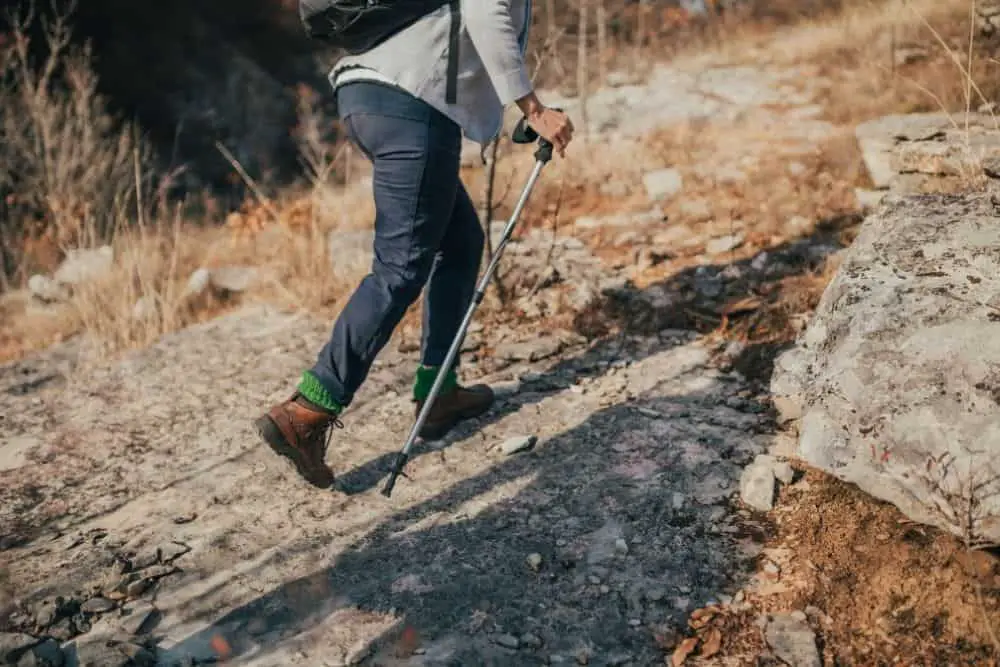
Just like overly tight hiking boots, loose footwear could also mess with your walking strides. As a result, it may hinder you from walking naturally.
This can be tedious because you may have to watch every step you take. Furthermore, if you combine this with walking on different terrains, you may end up having the worst hiking experience ever.
4. Some painful conditions
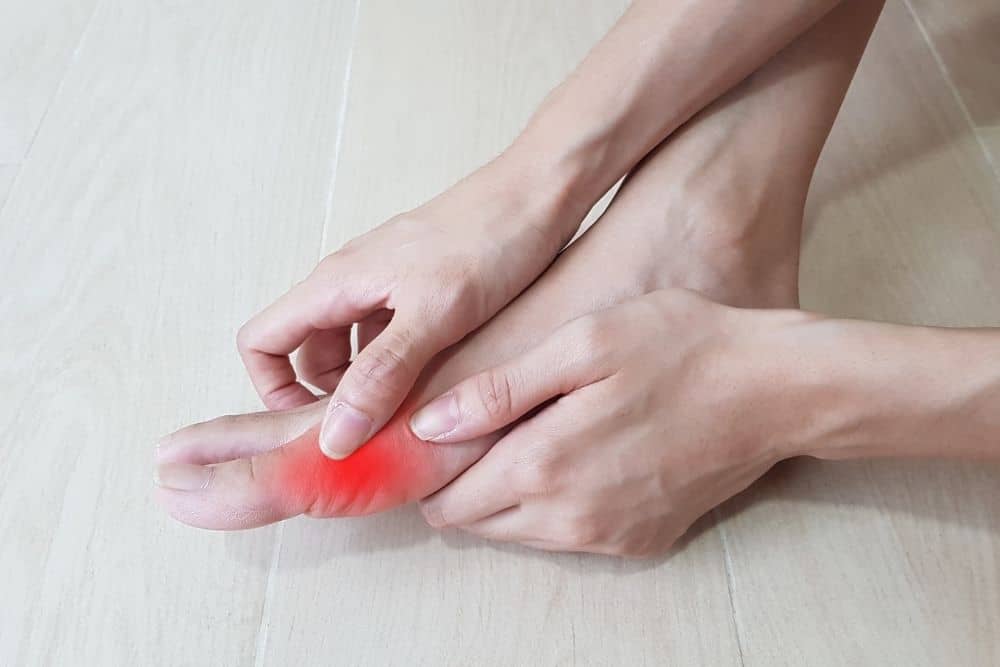
Wearing hiking boots that are too big could result in some painful conditions, affecting not just your feet but also other parts of your body.
For example, you may experience Achilles tendonitis, that is, pain in the area above your heel or back of your legs.
This happens when you over-strain your Achilles tendon when you’re walking. So, you end up overpulling the tendon while trying to walk in your hiking boots.
More so, you may experience arch pain due to inflammation and overworking the ligament that connects the front of your feet with the heel. These pains can extend to other parts of your body, like the neck, knees, and back.
Some other painful consequences you might get from too big hiking boots include;
Could result in blisters
You’re probably thinking that you can only get blisters from wearing overly tight hiking boots or if you didn’t wear the right socks. However, you can also get blisters from wearing loose hiking boots.
When your feet move freely, they’ll rub against the boots a lot, causing a lot of friction, and eventually, blisters on your heels. But, of course, you wouldn’t want to have to deal with that after a stressful hike in uncomfortable hiking boots.
The solution to preventing that is wearing the perfect fit hiking boots; you have fewer issues to worry about when hiking.
Foot pain and inflammation
Just like tight hiking boots, loose boots can also result in a condition known as metatarsalgia. This is a condition whereby you feel pain and inflammation in the ball of your feet.
Also, it could become worse if the pain transfers to other parts of your body.
If you don’t want to end up limping through hiking, then you should wear hiking boots that are fit, having support and protection for your feet.
Can trigger foot corn

Loose hiking boots can trigger foot corn, which is a condition where some layers of your skin harden due to friction and pressure.
For example, while ensuring that the boots stay in place, you may put pressure on your feet and get foot corn in the process.
How To Tell If Hiking Boots Are Too Big?
Big hiking boots are problematic, so it’s best you do away with them before they hurt you. Additionally, they could make hiking uncomfortable for you, which you wouldn’t want.
We advise that you watch out for some signals so you don’t have to deal with the possible consequences they may cause. Checking for the signs will do you a lot of good, and not doing so has its disadvantages.
So, how do you tell if hiking boots are too big? Watch out for these signals:
Signal 1: Bigger size than your regular shoes
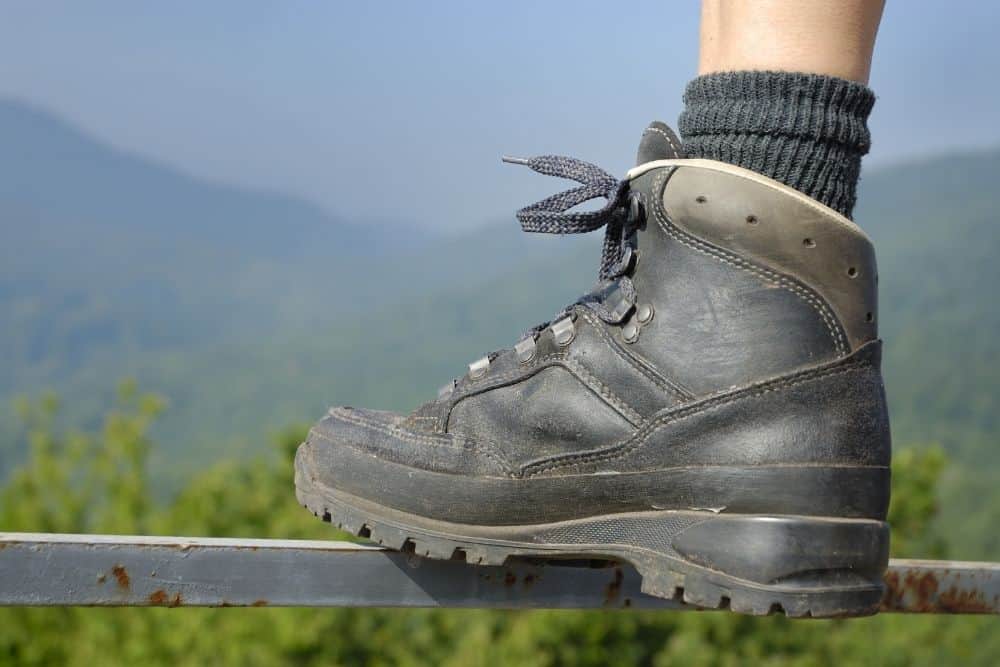
One signal to look out for is when the hiking boots’ size is bigger than your usual shoe size. Although shoe sizes differ, and some brands with the same size may have different fittings, you’d still have to be careful.
One brand size could be bigger, while another would be smaller. So, you should try the boots on to determine if they wouldn’t be too big for you.
Some people advise that you should probably buy ½ inch size bigger when buying hiking boots, so they’re not too big. However, more size could mean more room for your feet, depending on how small your feet are and the hiking boots brand.
So, you should test how comfortable your feet are before you decide.
Cons
- You’re at risk of falling when hiking.
- You’d have to deal with discomfort during your hiking trips.
Signal 2: Little or no ankle support
Another way to know if your hiking boots are too large is when they don’t provide enough ankle support you need for hiking. Hiking is different from your regular walks, and you’d be walking on various terrains and weather.
So, it would do you a lot of good if you wore the hiking boots that give you the proper ankle support you need. But, unfortunately, oversized boots won’t give your ankle protection and support it needs.
Also, the boot top won’t fit snugly around your ankle because there would be too much space in that area. If you didn’t discover that when you were buying, you can figure it out when hiking.
When you find out, you should replace them before they hurt you.
Cons
- Your ankles may hurt from not getting enough support.
- It makes you susceptible to different kinds of harm.
Signal 3: Blisters on your heel
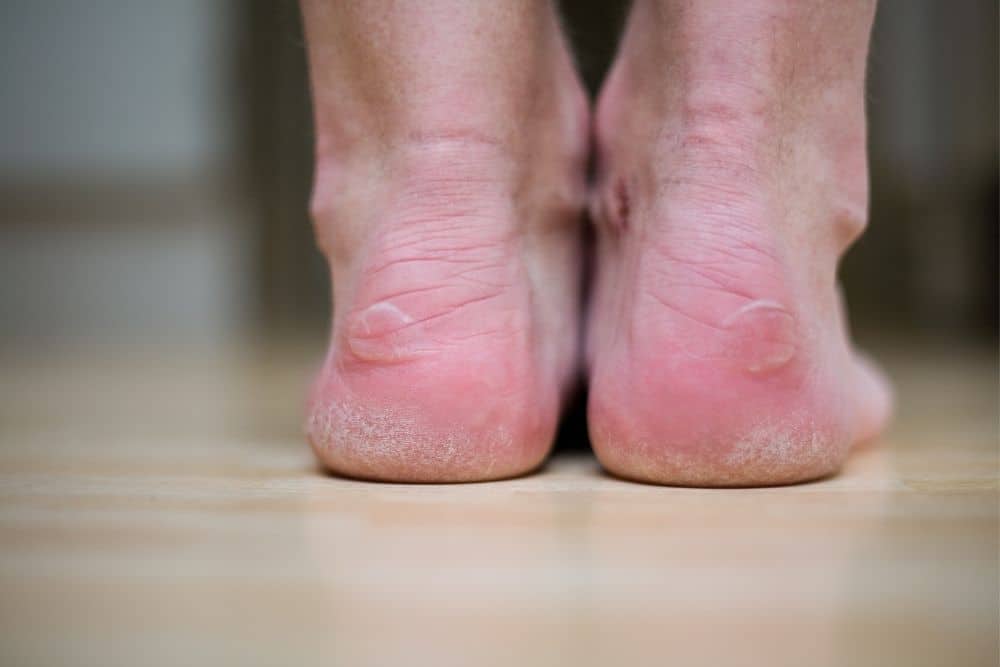
On some days, you find out if your hiking boots don’t fit when buying. On other days, you find out after wearing them hiking once or a couple of times.
Sometimes, you may not be able to tell until you see blisters on your heels. This could be a result of overly loose hiking boots.
Wearing big hiking boots can cause friction around your heel area leading to blisters. You shouldn’t wait until you get blisters around your heels.
You can detect big hiking boots on time via other signs.
Cons
- You have to deal with blisters for a long time.
Signal 4: Slipping feet
You can also tell that your hiking boots are too big if your feet slip freely in them. But, again, you should be able to point this out if you’re wearing them for the first time.
You will feel very clearly when walking on downhill roads, your feet will constantly slide forward.
However, if you’ve been wearing them for a while, you may not be able to tell because your feet would’ve gotten accustomed to them.
But you can tell if your feet keep slipping up in the boots, so you should change them to ones that fit better.
Cons
- You feel pain and discomfort while hiking.
- You have to deal with slipping feet till you finish hiking.
Signal 5: The thumb rule didn’t work
Some people advise that you try the rule of thumb when getting hiking boots to make sure they are not too tight or too loose. It involves you placing your thumb behind your heel in the hiking boots.
When they’re too tight, the thumb won’t go in; however, if they’re too big, there’ll be space between your thumb and your heel. So, you can try this method when buying.
If you borrow from someone, you can also try this before going to the hiking trail.
Cons
- You’d have to drag the oversized boots throughout your hiking trip.
Signal 6: Toe pains
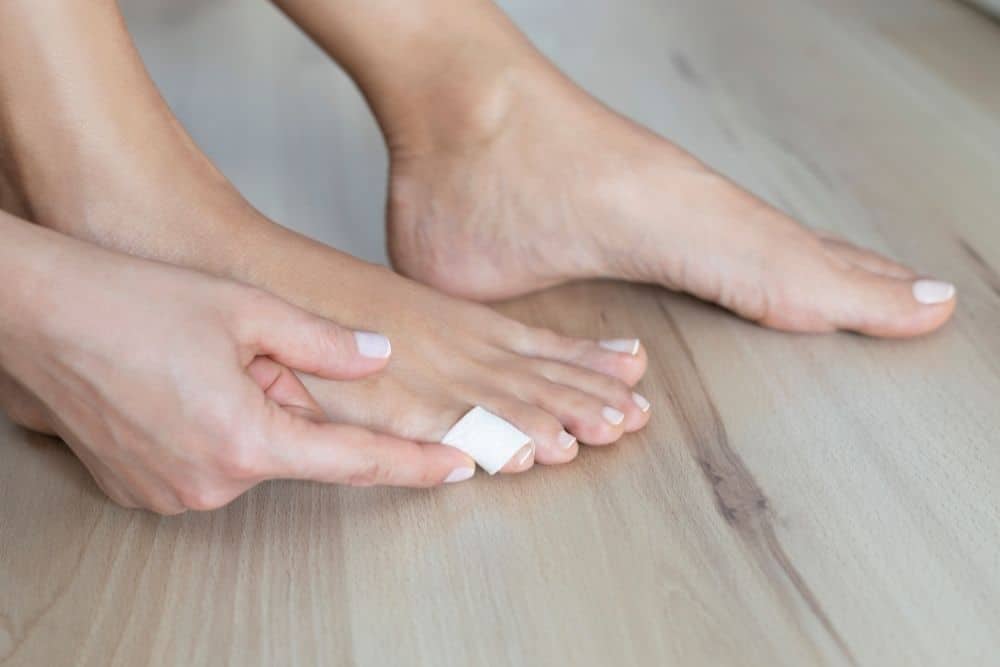
Another sign to watch out for is toe pains. Your hiking boots are oversized and toe pains are one of those terrible occurrences that happen when you wear them.
Your feet would shift around a lot when you wear big hiking boots, and your toes could hit the front of the boot at intervals. Also, you may be putting too much pressure around your toe areas while trying to hold the boots down so your feet don’t slip up.
Additionally, you could also squash your feet against the boot front, especially when you’re walking down a hill. Also, if you notice some bruising or skin irritation around your toenails, your hiking boots are probably too big for your feet.
At the same time, you may also notice toenail loss or damages. This is a sign that you should give those big hiking boots some rest and save your feet.
Cons
- You have to deal with painful toes through most of your hiking trips.
- Toe injuries may take a longer period to heal.
- You may have to pause hiking for a while.
Conclusion
Let’s face it, hiking boots are crucial for a successful and comfortable hiking experience. For this reason, your hiking boots need to be the right size; neither too big or small.
As earlier stated, wearing big hiking boots would make your hike stressful and uncomfortable for you. Then, “too big” hiking boots could result in consequences that you would rather avoid.
And that is why you have to watch out for these signals for you to avoid the consequences later. Nevertheless, this article has discussed some of the signs you should watch out for.
Also, it mentioned the benefits of watching out for those signs and the cons of not paying attention to them.
We’re sure you’d rather enjoy hiking than nursing a bruise or pain after hiking. So, ensure hiking boots fit you perfectly before buying them or wearing them hiking.

